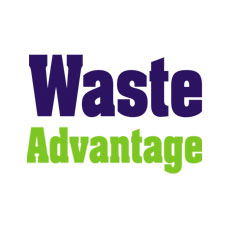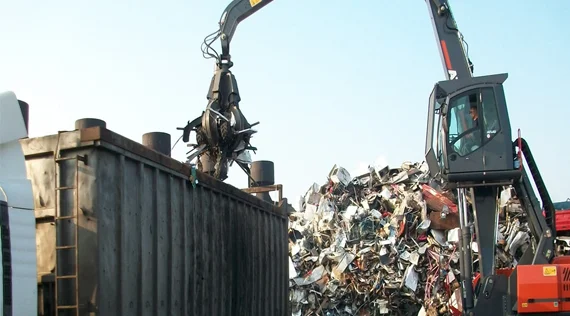High-pressure misting systems function by atomizing a specialized chemical solution into ultra-fine particles.
SEATTLE (Waste Advantage): Odor control is a fundamental challenge in waste management, particularly in facilities such as municipal solid waste (MSW) transfer stations, landfills, and wastewater treatment plants. These sites handle vast amounts of waste daily, leading to strong, persistent odors that can create unpleasant working conditions and negatively impact surrounding communities. Left unmanaged, these odors can result in complaints, regulatory issues, and potential health concerns. Implementing effective odor control solutions is essential for maintaining air quality, worker safety, and community relations.
One of the most effective odor control solutions is the high-pressure misting system. This system disperses a fine mist of odor-neutralizing solution, capturing and eliminating odors before they can spread. Through the strategic placement of atomization nozzles, particularly around waste processing areas, these systems maximize efficiency in odor reduction. In addition to odor control, misting systems can also help suppress dust, further improving air quality within these environments.
How High-Pressure Misting Systems Work
High-pressure misting systems function by atomizing a specialized chemical solution into ultra-fine particles. These tiny particles bind with airborne odor molecules, breaking them down before they become a problem. The mist also attaches to dust particles, causing them to settle instead of remaining airborne. This dual function makes misting systems an excellent solution for both odor and dust control.
A typical misting system consists of several key components:
Atomization Nozzles: These nozzles create an ultra-fine mist, maximizing contact with odor molecules while also suppressing dust. Different nozzles may be needed for heavier or lighter mist depending on application.
- Odor Control Solution: Specially formulated with enzymes or odor-binding agents, these solutions break down waste odors at a molecular level. Choosing the right chemical is essential, as different formulations serve different applications.
- Pump System: A high-pressure pump, typically a triplex plunger pump or diaphragm pump, mixes the odor control solution with water and pressurizes it to more than 800 psi before sending it to the nozzles. The metered injection system ensures precise dosing, optimizing efficiency and reducing chemical waste. The pump system is crucial for maintaining the high pressure needed to atomize the solution effectively. Triplex plunger pumps are industry standard for continuous operation in demanding environments. Diaphragm pumps, on the other hand, are known for their durability and ability to handle high pressures, corrosive chemicals and provide a steady flow rate with longer life, ensuring consistent misting performance.
- Filter System: Filtering the water is important to keep maintenance and downtime to a minimum. Most high-quality mist pumps have a triple filtration system in place with sediment filters that keep pollutants from making it into the pump and nozzles. It does not take much to plug up the small opening in the nozzles so upkeep of filter is a must to ensure a properly functioning system. In some cases, with very bad water or well water, a larger filtration system should be added.
- Control System: Automated controls adjust misting intensity based on odor levels and environmental conditions. Zone-based automation, solenoid valves, and remote-control functions allow operators to customize the system’s performance as needed. Remote control operation is particularly useful on tipping floors, where operators can increase misting when necessary. Zone-based automation allows for targeted odor control, ensuring that the chemical infused mist is concentrated in areas with the highest odor levels. This not only improves efficiency, but also reduces chemical usage and operational costs. Solenoid valves play a critical role in zone-based automation by controlling the flow of the odor control solution to specific areas.
The Benefits of Effective Odor Control
Implementing a high-quality odor control system offers a range of benefits for both facility operators and the surrounding community:
- Reduced Odor Complaints and Regulatory Issues: One of the most immediate benefits of an effective odor control system is a significant reduction in complaints from nearby residents and businesses. Unchecked odors can quickly become a public nuisance, leading to negative media attention and pressure from regulatory agencies. By neutralizing odors at the source, high-pressure misting systems help waste facilities maintain compliance with environmental regulations and foster better relationships with their communities.
- Improved Worker Health and Safety: Exposure to strong odors and airborne contaminants in waste facilities can pose potential health risks. Some odors originate from volatile organic compounds (VOCs), which can cause respiratory issues, headaches, and long-term health problems. By using misting systems to neutralize these compounds, facilities can reduce worker exposure to harmful pollutants, creating a safer and healthier work environment.
- Dual Functionality—Odor and Dust Suppression: Beyond odor control, misting systems also help suppress dust, which is a major concern in many waste facilities. Dust generated from waste handling operations can contribute to poor air quality, respiratory issues, and reduced visibility. By using high-pressure misting systems, facilities can control both odor and dust simultaneously, enhancing overall workplace conditions. Dust control is particularly important in waste management facilities, as dust particles can carry harmful pathogens and chemicals, posing additional health risks to workers and nearby residents. Effective dust suppression not only improves air quality, but also reduces the risk of respiratory issues and other health problems associated with prolonged exposure to airborne dust.
Courtesy: www.wasteadvantagemag.com





 Member
Member